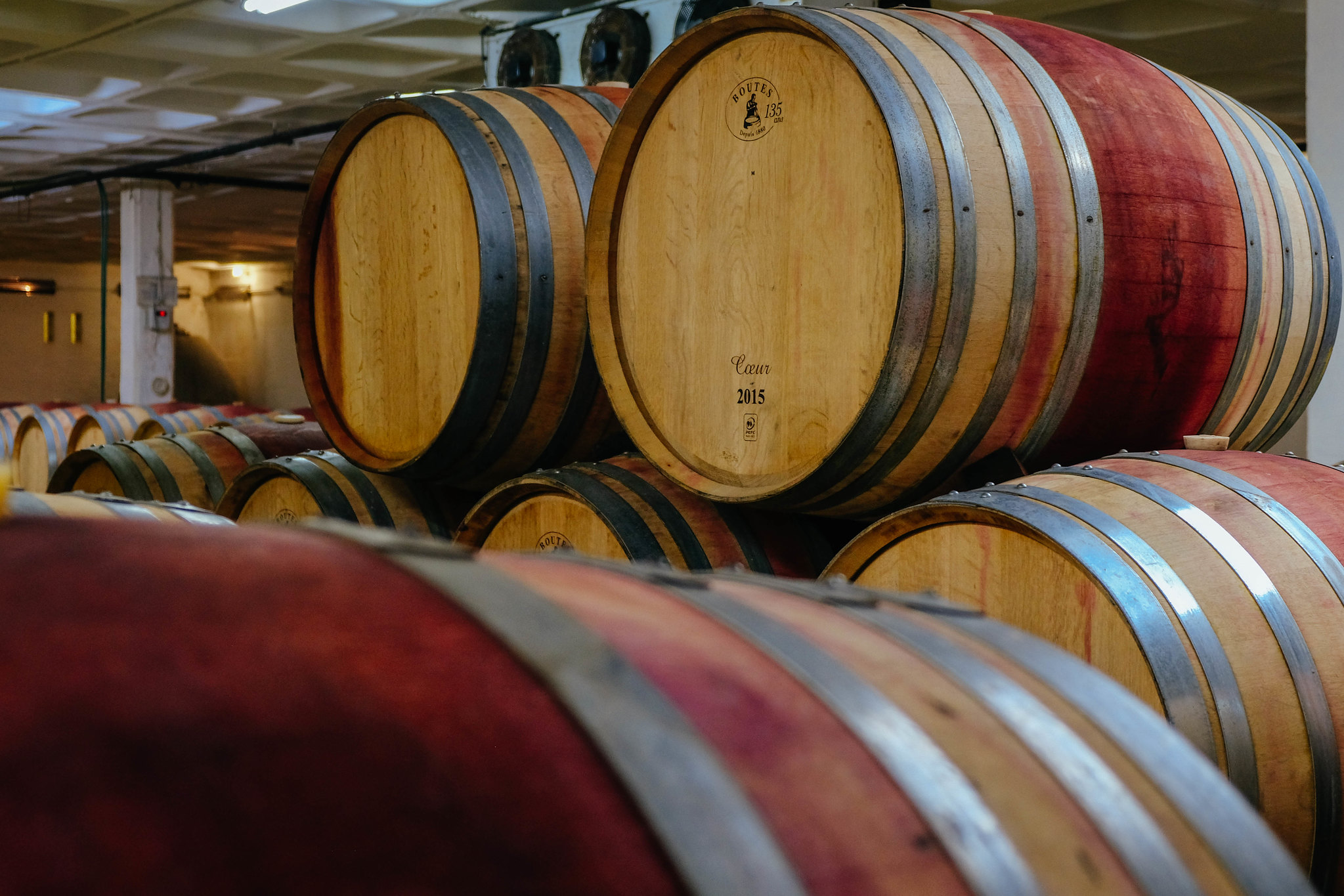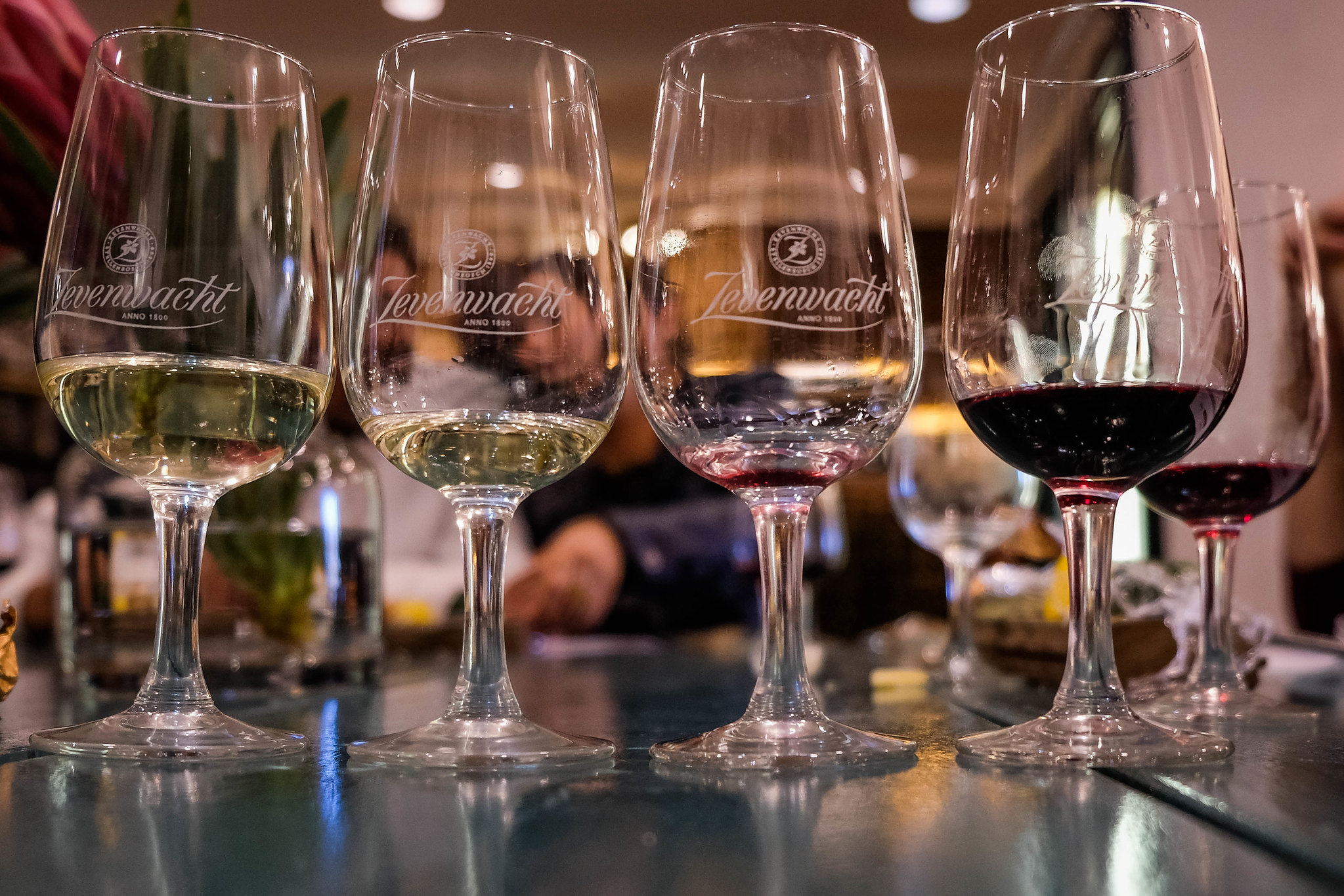
This month marked my 4th trip to South Africa, and finally I had the chance to explore beyond Joburg. Somehow I got lucky enough to get a flight to Cape Town on my way to work in Joburg, so I had about 48 hours to discover this different side of the country! Of course I would only ever get lucky like that in the middle of winter so I came with an umbrella, prepared for cold and rain. However, it turns out South African winter is comparable to British summer. Or better. The only thing that ‘winter’ prevented me from doing in the end, was visiting Robben island. I am told the tour is not great anyway, but it is a place of great historical importance so I would have been interested in seeing it. Perhaps next time? I can think of a couple more people who would love Cape Town in winter!
I made a rather last-minute booking to stay at The Backpack ‘fair trade’ hostel. The beds were very comfortable and the people very friendly. (No towels though!) I was there Friday and Saturday, and unfortunately Sunday morning I did encounter someone vomiting in the communal bathrooms. Looks like they would have been a fun crowd to go out with I guess? I had been travelling for about a month by this point though so I did not explore the clubs of Cape Town on this occasion. Happily, I did befriend my room-mates, so I had company for some day-time activities.
Before anything else though, I took myself to the District Six Museum. During apartheid tens of thousands of people were forced to leave their homes and livelihoods here. There are a lot of artefacts from those days and, significantly, many portraits and stories. It took me a good half hour into the exhibit to realise many parts of of district six no longer exist; it was not just taken or occupied, sections were actually flattened. There are archaeological excavations, trying to put the pieces back together. I learned about this during my undergraduate degree – wars in which even the foundations of buildings were destroyed, on purpose – but I did not realise this had also occurred in South Africa and I had never seen anything like that in person. I had to sit down for a moment to really let this sink in. Every time I visit South Africa I learn more about some very dark pages in human history and it is deeply disturbing.
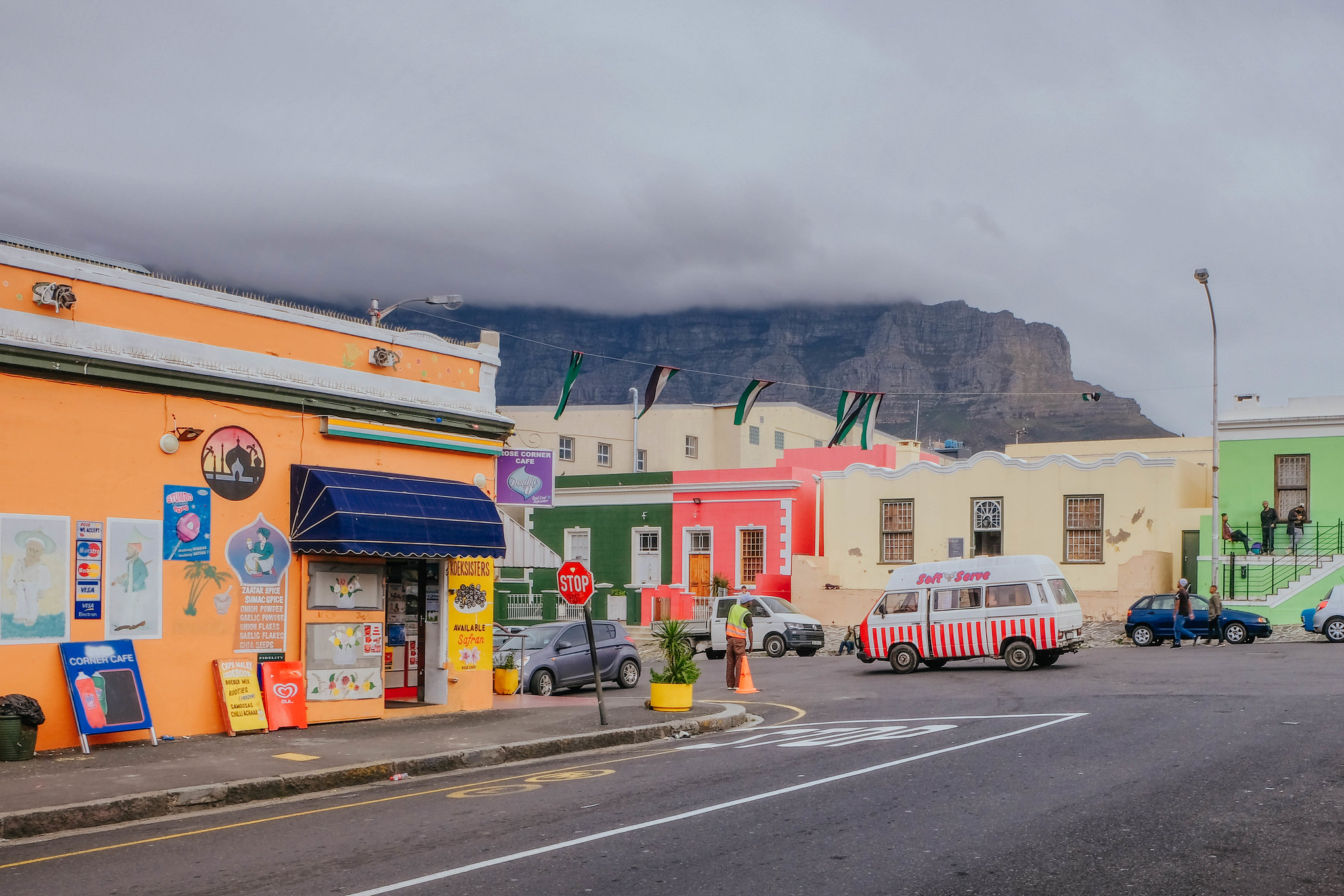
Right, next I embarked on a series of ‘free’ walking tours. They were about an hour, and they were ok. The first was of the Bo-Kaap (‘Boven Kaap’, ‘Above the Cape’) area, which has a significant Malay population and South Africa’s oldest mosque. Apparently nowadays it is mostly known for it’s instagrammable colourful buildings. I was told that this area, which used to be home to freed slaves, is rapidly becoming gentrified due to its architecture and proximity to the city centre; something the locals do not necessarily welcome. The tour felt a little bit like walking into someone’s front garden, and I cannot imagine that residents there love having tourists march up and down their streets all day. I would have loved to enter the mosque or try some Malay food, but that was apparently not really an option on this tour.
The next tour was of the historic city centre of Cape Town. We walked past the old slave lodge, where a Dutch girl on my tour managed to exclaim ‘oh leuk! daar moeten we later ook effe heen‘ – ‘oh, fun! we should drop by there later’… which gives some serious insight in the way Cape Town is handling tourism I think. A lot of people seem to come to Cape Town on fancy trips to pet penguins and taste wine (more on this below); they are not your typical culturally interested and historically oriented visitors. We also saw the latest statue of Nelson Mandela at the city hall. The tour guide remarked it had cost over a million rands, and while it is significant, and people like it – this should have obviously been invested very differently in the city.
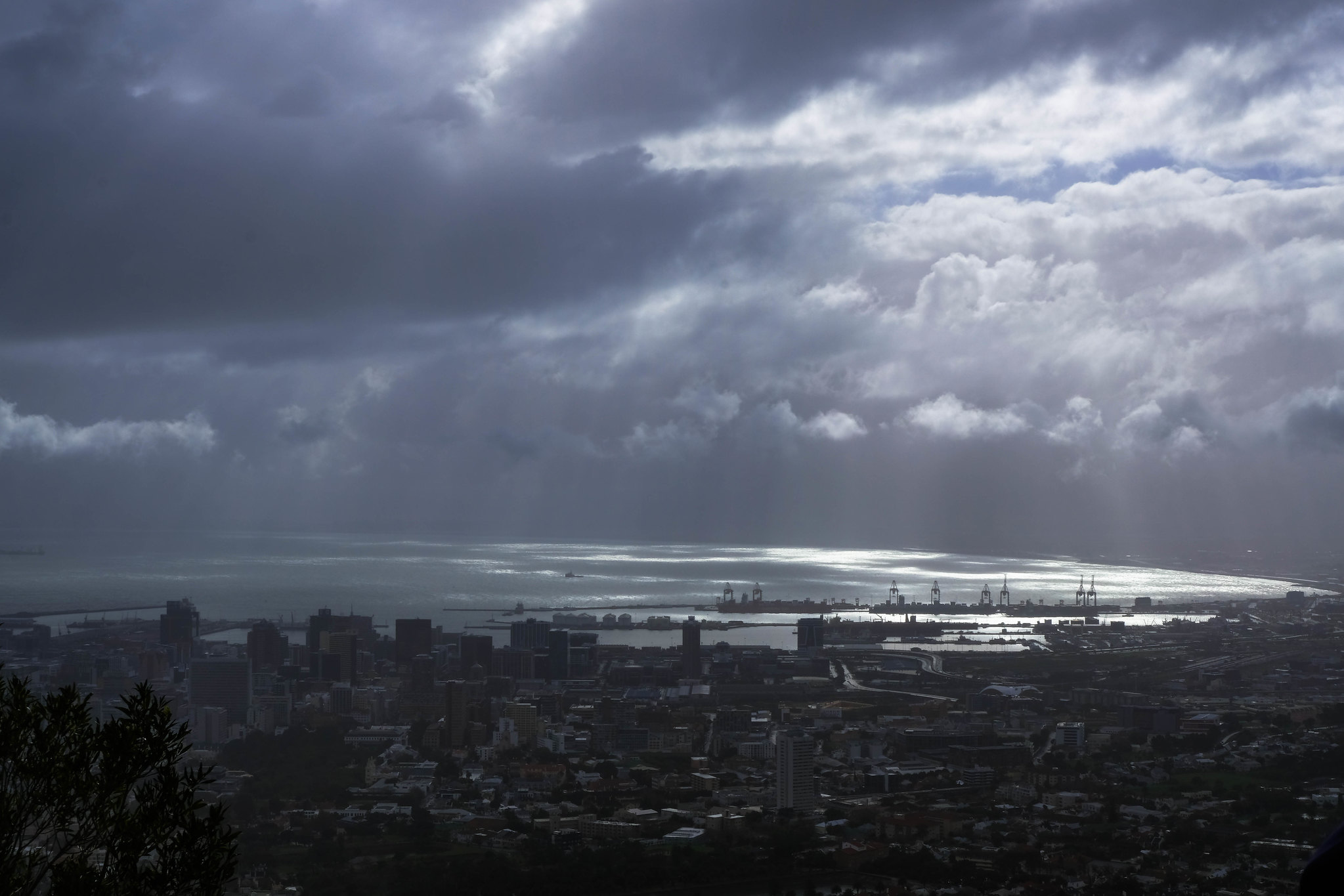
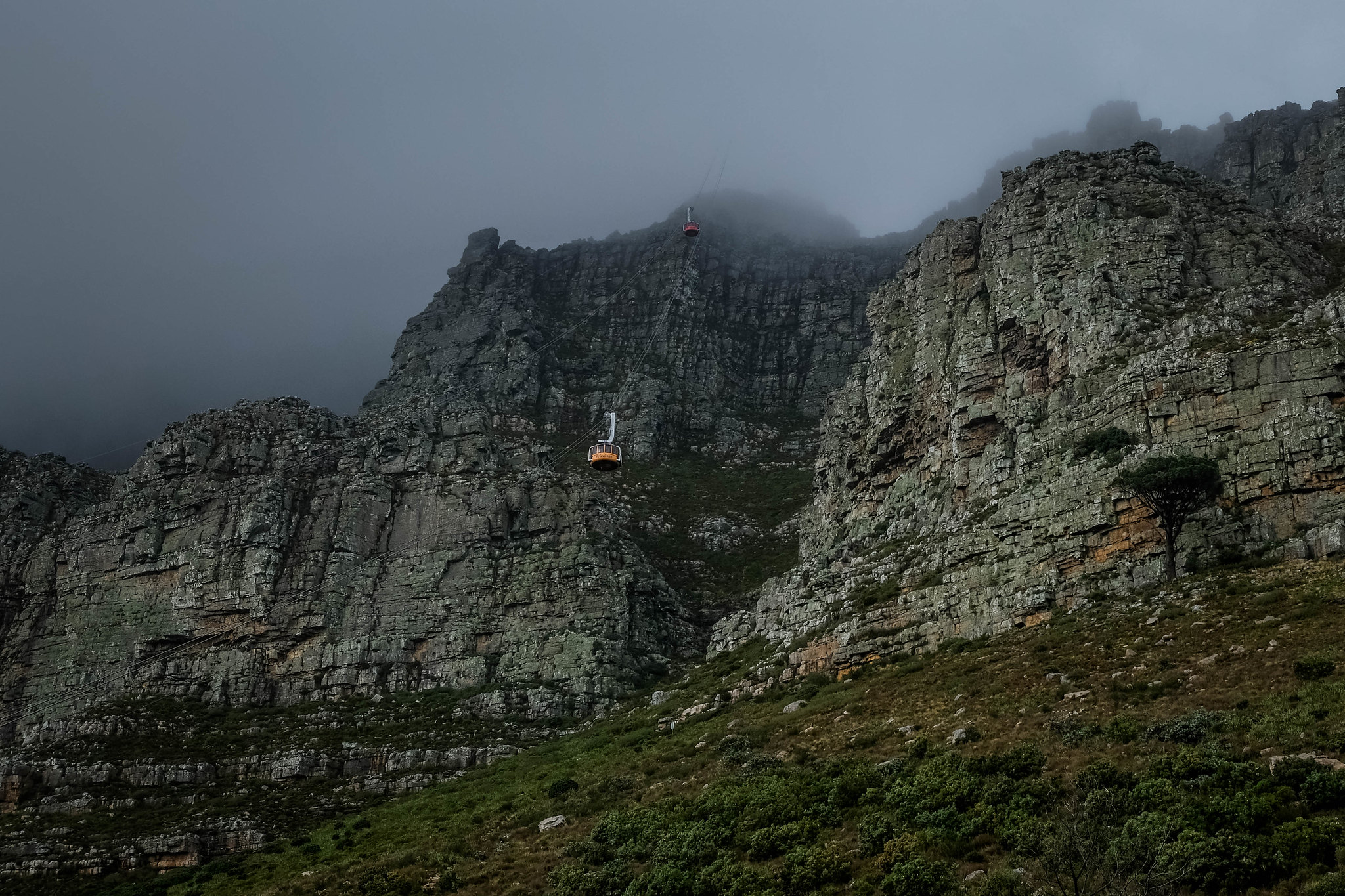
So speaking of not especially historically interesting activities, here is a round-up. Since it did rain on Sunday, my new hostel friends and I took a hop-on hop-off bus to get around the city. It cost around 10 GBP for a day ticket. The first stop was Table Mountain, where normally you would get off to go to the top. However, they have two weeks of maintenance in August, and fortunately for me (I actually do not like mountains and I do not like heights, so I am probably the only visitor to Cape Town ever to want to avoid its main attraction) it was not possible to take the cable cart up; or to hike up, due to the fog/clouds. We did get a beautiful rainy winter view of the city however.
That said, the geology of Table Mountain is pretty interesting. It is hundreds of millions of years old, and it has a flat top because it was actually once at the bottom of a valley. Then, what used to be one of the highest points, made up of rock now worn away by erosion, forms the current ‘Cape Flats’. (I spent all weekend wondering whether ‘Cape Flats’ referred to a geological feature, as I thought, or flat buildings. Because it would be typical for me to mistake architecture for a natural feature. I had to look it up in the end to make sure I was actually right.)
The Flats played an important role during apartheid (see ‘District Six’, above); or still do, really. It is still where the majority of the population of Cape Town lives today. I thought about going there, to learn more about local culture, and get a look at the ‘real’ Cape Town, not the shiny V&A Waterfront which seems aimed mainly at wealthy (white) people and tourists. However, when I googled how to go about this I was faced with blog posts on slum tourism. It is something I had never heard of and never really considered, and I am not sure what to think. I would still like to educate myself further… but I think I would rather do it over dinner, invited by a friend, who lives there, than by taking a tour and accidentally invading anyone’s privacy.

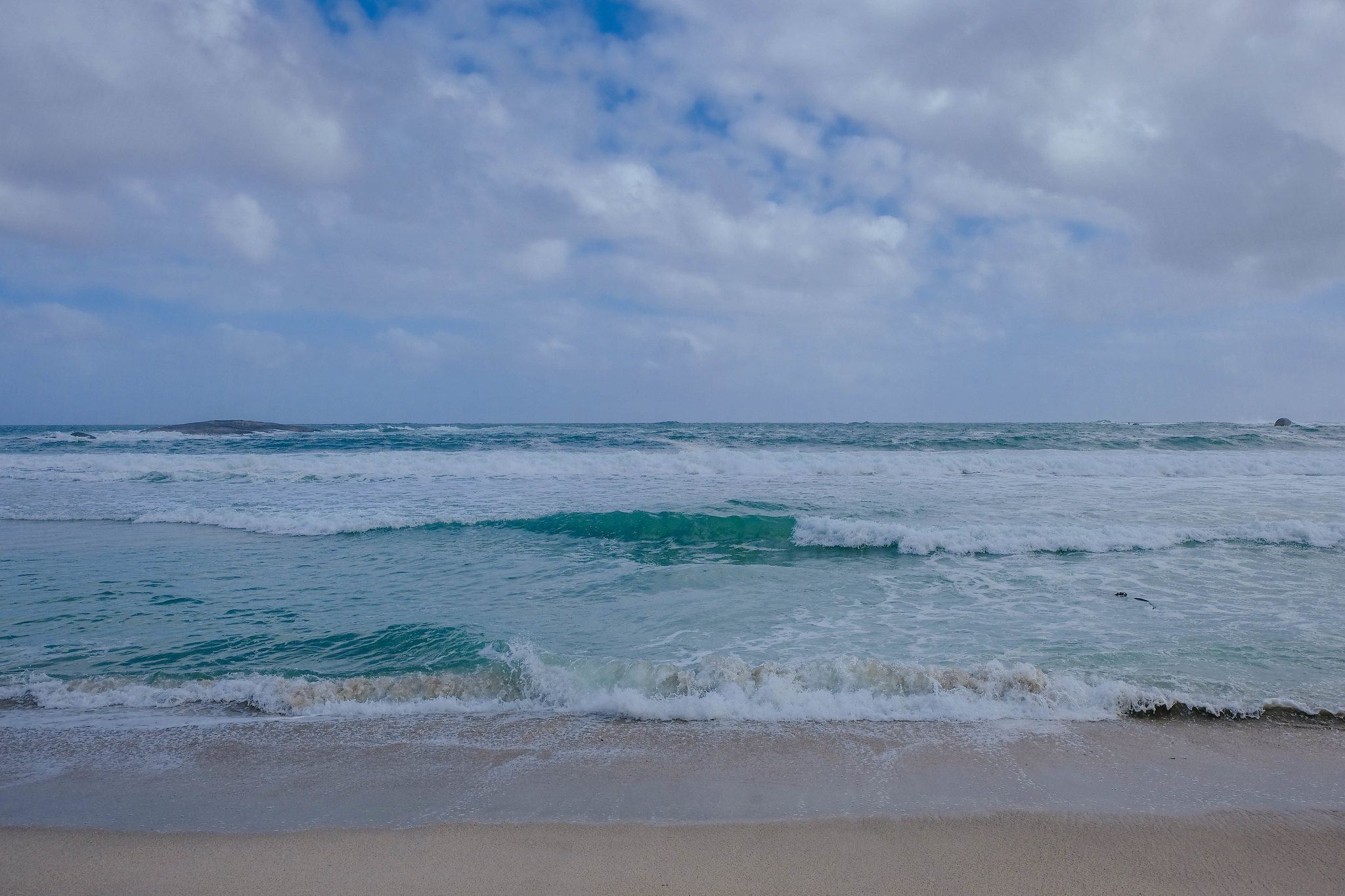
The next stop on the bus was Camps Bay, where we decided to get off for a walk on the winter-y beach. It is such a luxury to be able to do that in the middle of winter! Also, the sea water is actually warm there. Apparently it is warmer in winter than in summer due to something with the current? Someone tell me whether that is true or not. It looks like Camps Bay would be nice to have a stroll around on a not-Sunday, with little shops and cafes everywhere. Although, it also looks expensive. And great for surfing, if you like/can afford surfing.
A lot of places in Cape Town have rather badly translated ( ? ) English names. I.e. Camps Bay was named for a sailor called Fredrick Ernst von Kamptz. So Kamptz turned into Camps. It has nothing to do with a camp, or camping, and the original name was certainly not spelled with a ‘c’.
Anyway, our last stop was the V&A Waterfront – which was (stereo-typically, yep) one of my favourite spots in Cape Town. Perhaps my reasons for loving it are slightly unusual though? It is because I have been trying very hard for the past year or two to only purchase ethically produced clothing. I have been doing ok, I have to say. I even managed to buy a new ethical/sustainable travel bag! Although I am really struggling to find affordable underwear at the moment. So, I was very excited to discover a market at the V&A Waterfront which not only sells clothes made in South Africa, but also specifically made in Cape Town. And it actually somewhat fit in my budget range as well. I got two new jumpers, but I could have easily bought another dozen items. I really wish London had one of these markets. (N.b. London has a couple rather good markets, but I cannot afford to buy anything there.)
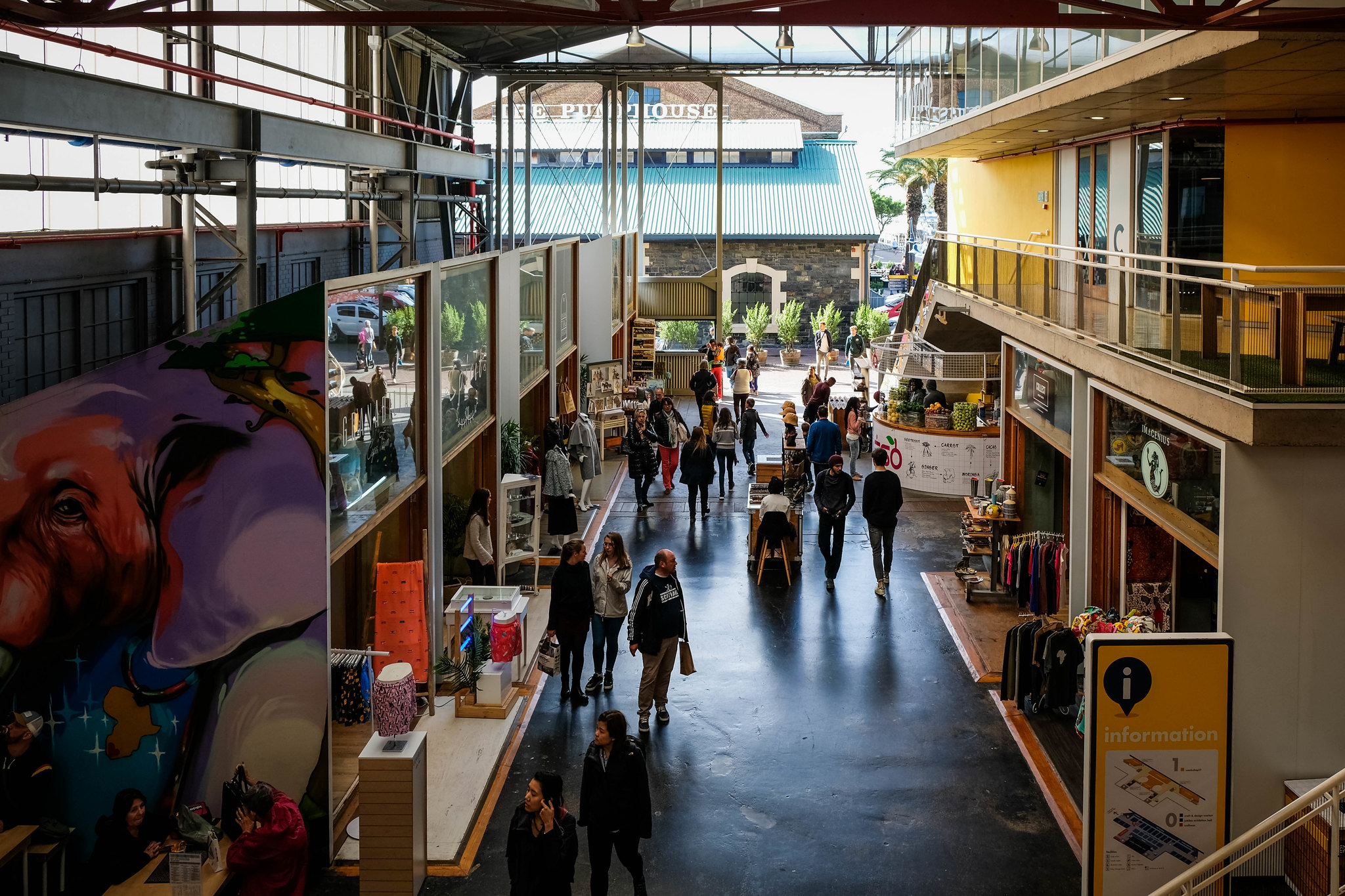

Ok so the reason I can complain about Cape Town and its sights and its tourism a little… is because I participated in it. On Saturday (yes I am aware I am going back in time a day now) I booked myself onto a full day Cape Peninsula tour. My favourite part was potentially the morning drive up to the Cape of Good Hope. It was stunning. Although it also required travel sickness tablets; twisty mountain roads ugh.
Cape of Good Hope is the section of South Africa that receives most (or all) attention in Dutch history books and this was definitely a ‘bucket list’ place for me to visit. The Portuguese originally named it the ‘Cape of Storms’ (the water did look treacherous there) but it was later re-named Good Hope because everyone was very enthusiastic and optimistic about the sea route to India. The Dutch East India Company established itself near the Cape of Good Hope in the mid-17th century CE (now Cape Town), to re-supply its ships on the way to the East. This was one of the main ways in which the Dutch were able to build their economy and their empire, which still resonates today. This is meant to be very impressive of course, and it was, but it also facilitated slave trade and rather directly lead to the later racial segregation in South Africa (which is the bit the Dutch leave out of the history books).
Still, to stand in this place that ignited the golden age; so much exploration; so many new international relationships. And today, Cape Town is one of the most multicultural and multilingual cities in the world.

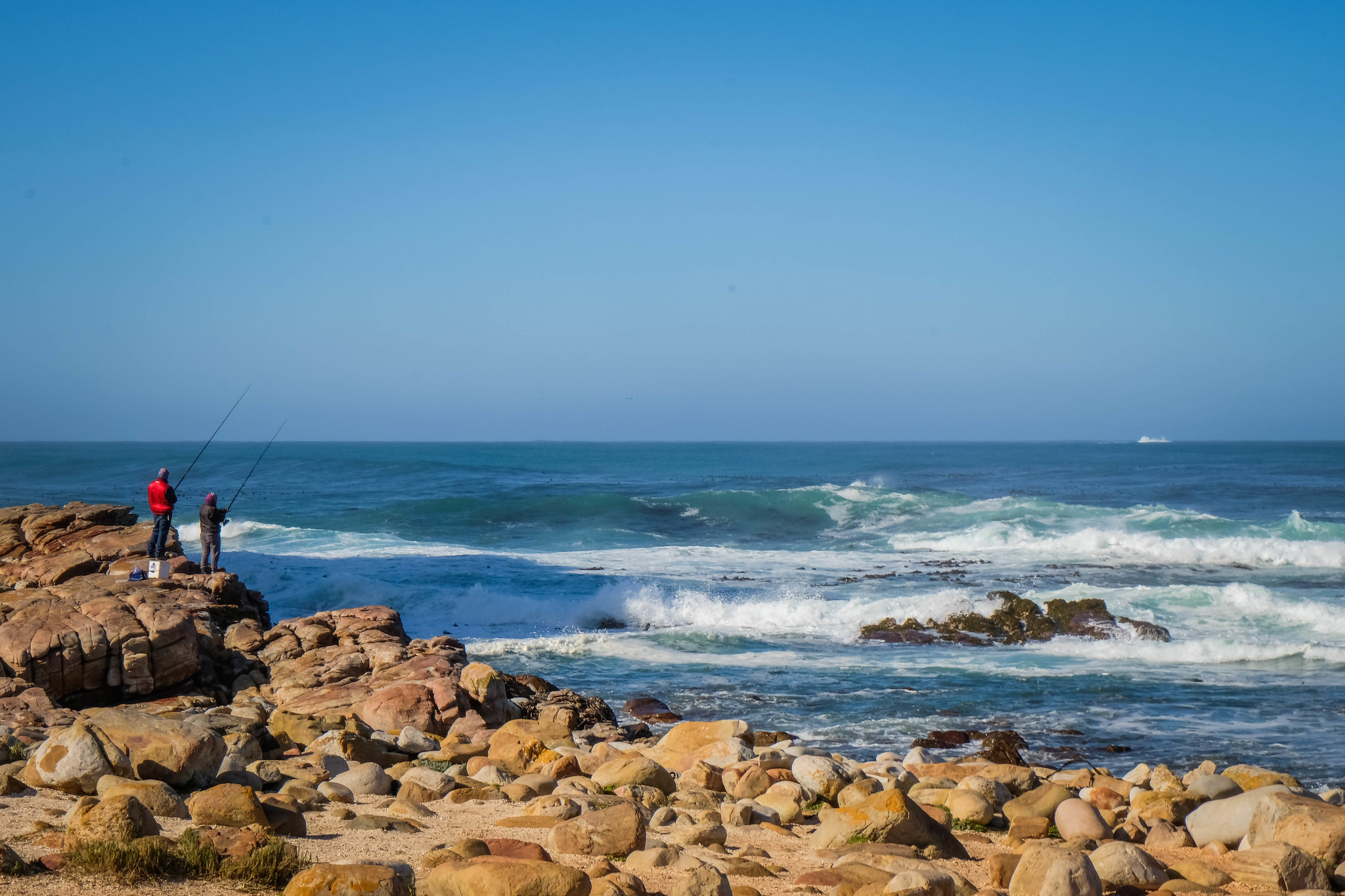
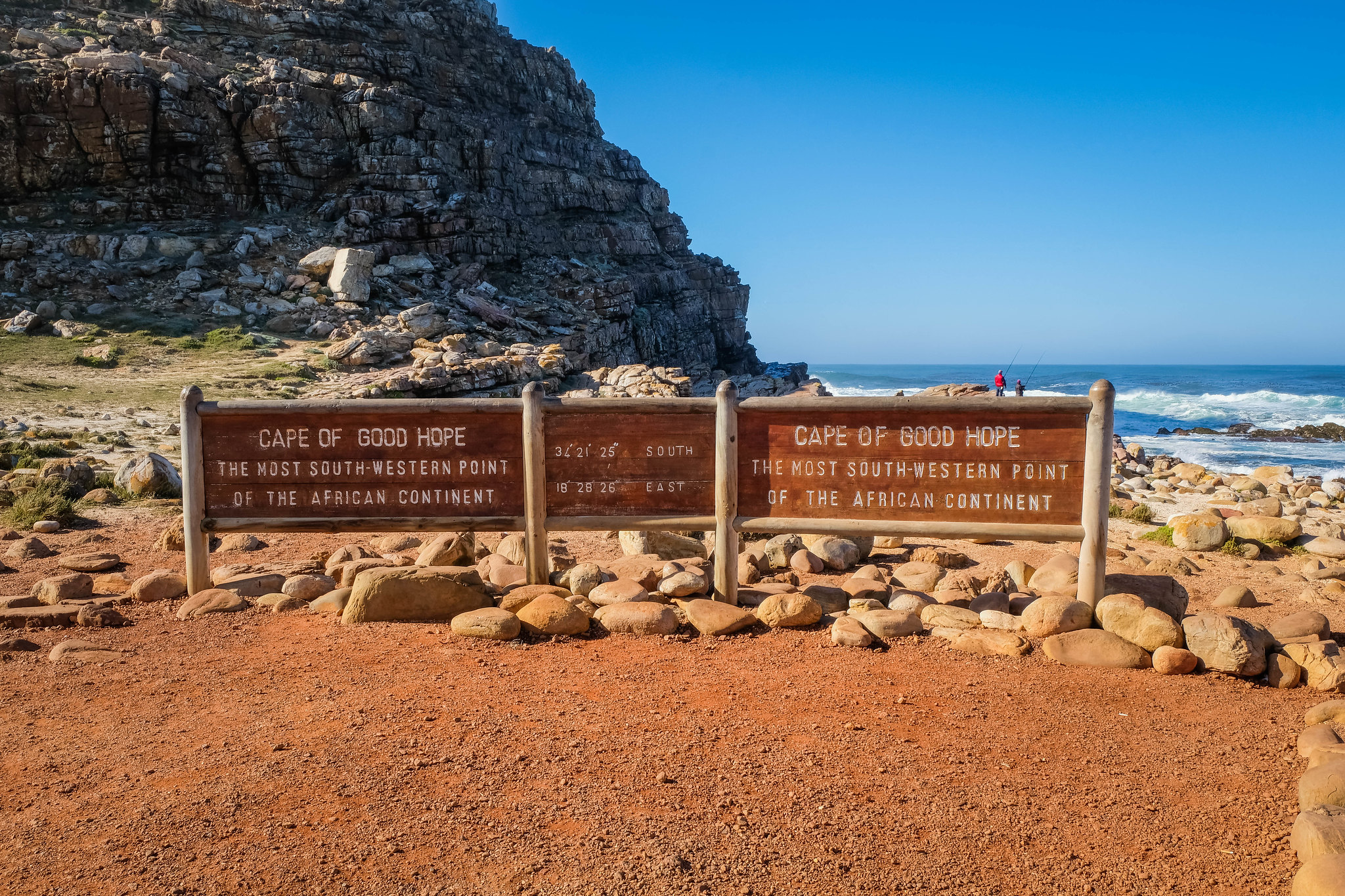
The next stop on the trip was the African penguin colony at Boulders Beach. I almost did not go, because it was expensive (around 8 GBP) and I have recently been reviewing how I feel about zoos/safaris/watching animals. However, I am so happy I went to have a look. Penguins are such amazing animals, and it was so cool to see so many of them in the South African sunshine. They were so cute, and there were little ones as well. Also, the penguins seemed to have plenty of opportunity to run off or hide far away when they got sick of all the photos being taken.
The penguins turned up at this beach in the 1980s. Penguins in Africa? Yep, there are several colonies, from South Africa to Namibia. They are not doing especially well though and their numbers have been declining for years, particularly due to pollution. If you have seen a news item about penguins and oil spills, it was probably these guys… which is so heartbreaking. As a result, the Boulders Beach colony is protected (although I am sure the penguins themselves pay little attention to this and go for a little explore once in a while).


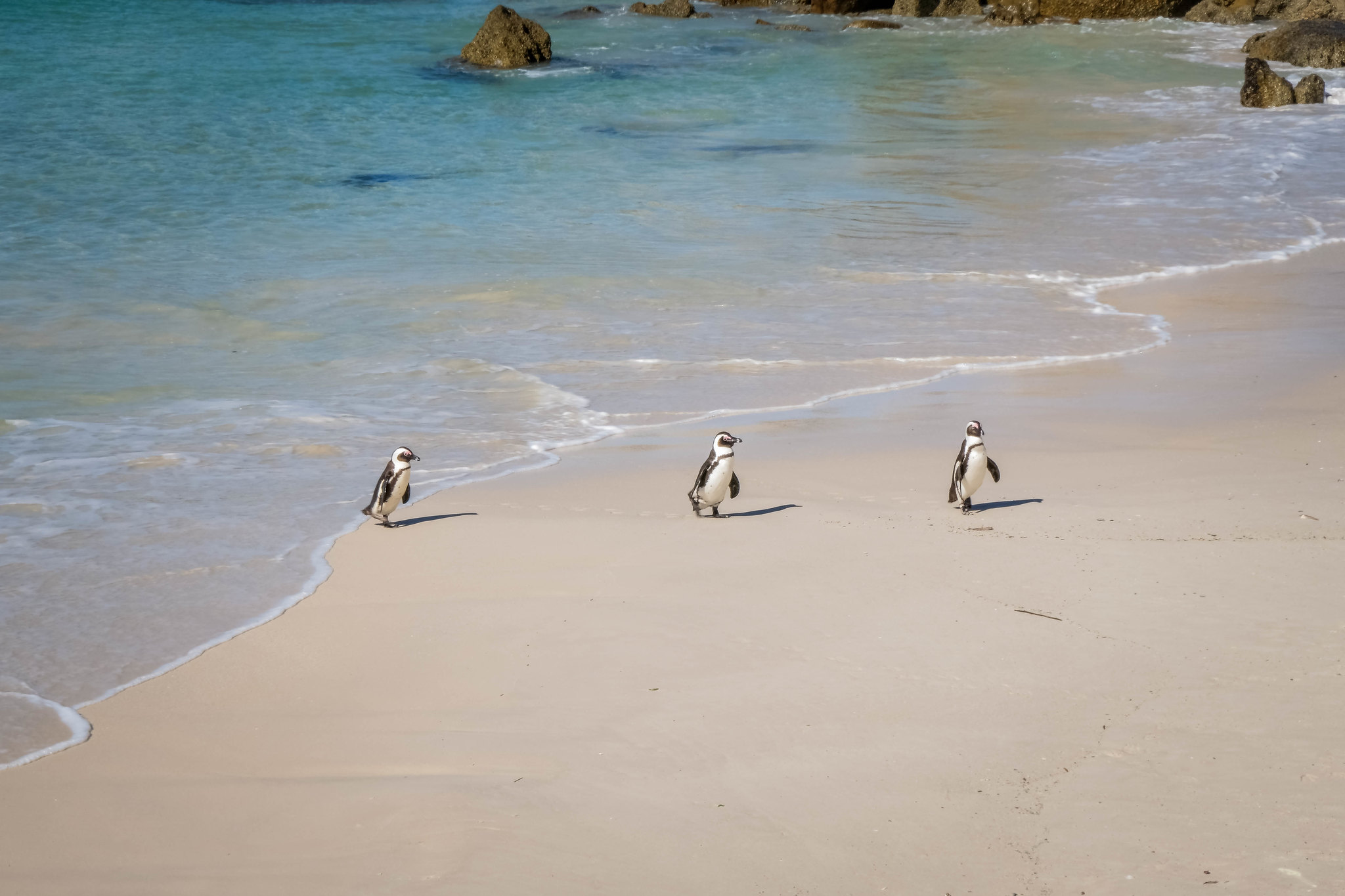
The last stop on the Cape tour was Stellenbosch. This town looked just like the Zuiderzee Museum to me (old Dutch open air museum). Apparently, it is the second oldest European settlement in the Cape area. It is also another one of these places named after people: Stellenbosch means ‘(van der) Stel’s Bush’. Nowadays the town is most famous for its wine though. Stellenbosch is part of the Cape Winelands, which is the biggest wine region in South Africa. Well, and it has a nice looking university. Would not mind going for a visiting fellowship there.
It would have been nice to spend a couple of hours there to walk around and explore the shops… but we had to go off and try some wines of course. The tour I booked included one of the worst wine tasting experiences I have ever been on (and no, I have never felt more posh than when I wrote that sentence). They expected us to actually drink all the wine (which would have been brilliant, if it had been good wine), and the staff frowned every time I asked for a new glass for a new wine (someone even tried to pour a red into my white?!). Also, the cheeses they provided were not very good and definitely did not go with the wines (a strong blue stands out in my mind; I love a good blue cheese, but not if it means I cannot taste anything afterwards!). Oh I would love to go back some time and do this properly; have someone explain the differences between various pinotage wines; walk through the vineyards. There is so much potential there for a very lovely holiday.
So to return to my initial points: tourism in Cape Town is confusing at best, because I did not feel it was socially sensitive enough; and bad at worst, exploiting ignorant Europeans with their nice wallets. However, the Cape is fantastic. I loved it there. It makes a very good vacation destination if you are travelling with less adventurous companions, who like wine and penguins (and who doesn’t). I will go back some day (and maybe even make it to Robben island).

